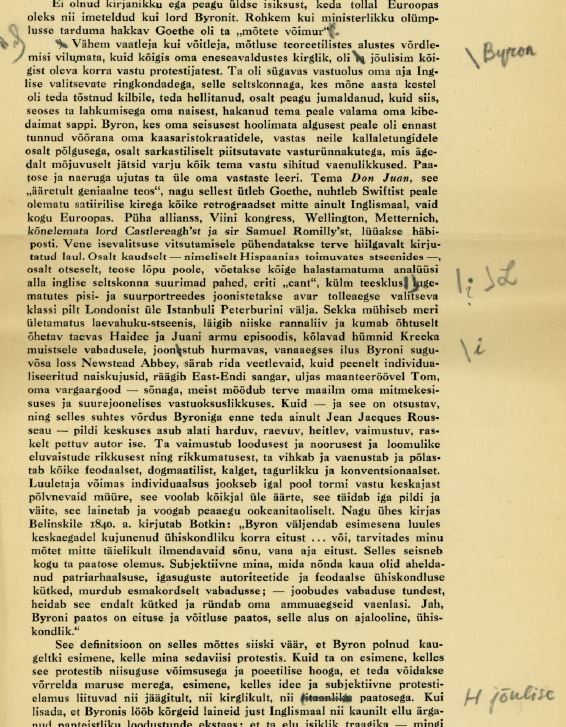History
1938
On 2 January 1938 Konstantin Päts, the Protector of the Estonian State, signed order no 35, into law, thus founding the Estonian Academy of Sciences on the basis of „the undeferrable need of the state“.
The first full session of the 12-member Academy of Sciences took place in April of the same year. After Estonia had been occupied by the Soviet Union, the Academy of Sciences was disbanded; on 17 June 1940 the President of the Republic was forced to sign a decree to abolish it. In 1945 the Academy of Sciences was reinstated, but now in the capacity of the Academy of Sciences of the Soviet Socialist Republic. As a part of this institution the Language and Literature Institute began operation on 1 January 1947, as a part of which the Under and Tuglas Literature Centre was founded 46 years later.
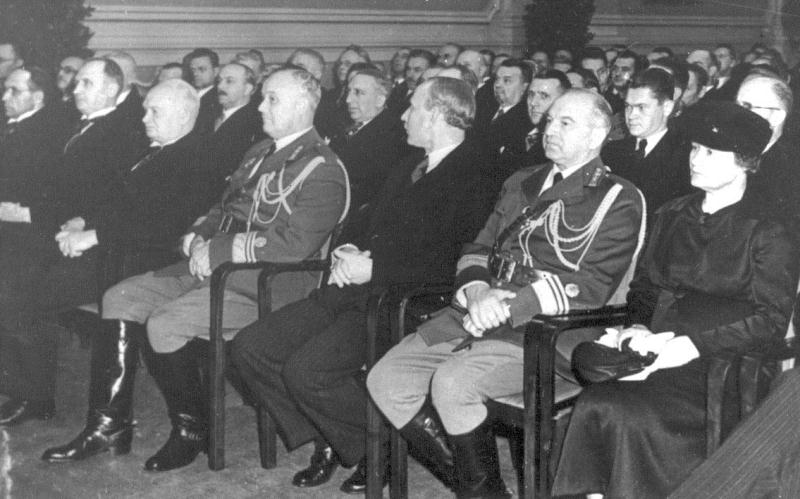
1970
On 8 May 1970, the writer and academician Friedebert Tuglas made his last will and testament, whereby he left his property to the Academy of Sciences. He also expressed the wish that a house museum-research centre be established in his Nõmme home. This was the residence of the literary couple Artur Adson and Marie Under, built in 1933. After the owners fled abroad in 1944, Friedebert and Elo Tuglas were given permission to move into the building, as their home in Tartu had burned down.
Since 1946 Tuglas had been a corresponding member of the Academy of Sciences, and remained so even during the starkest stalinist times, when he had been expelled from the Writers` Union that he had himself established and was banned from publishing his works. Indeed, it was apparently in recognition of this strange independence that Tuglas bequeathed his manuscripts, library, art and photo collections to the Academy of Sciences. According to the list compiled by the committee for recording bequeathed property, there were 12 618 books in Tuglas` library and 1014 works in his art collection.
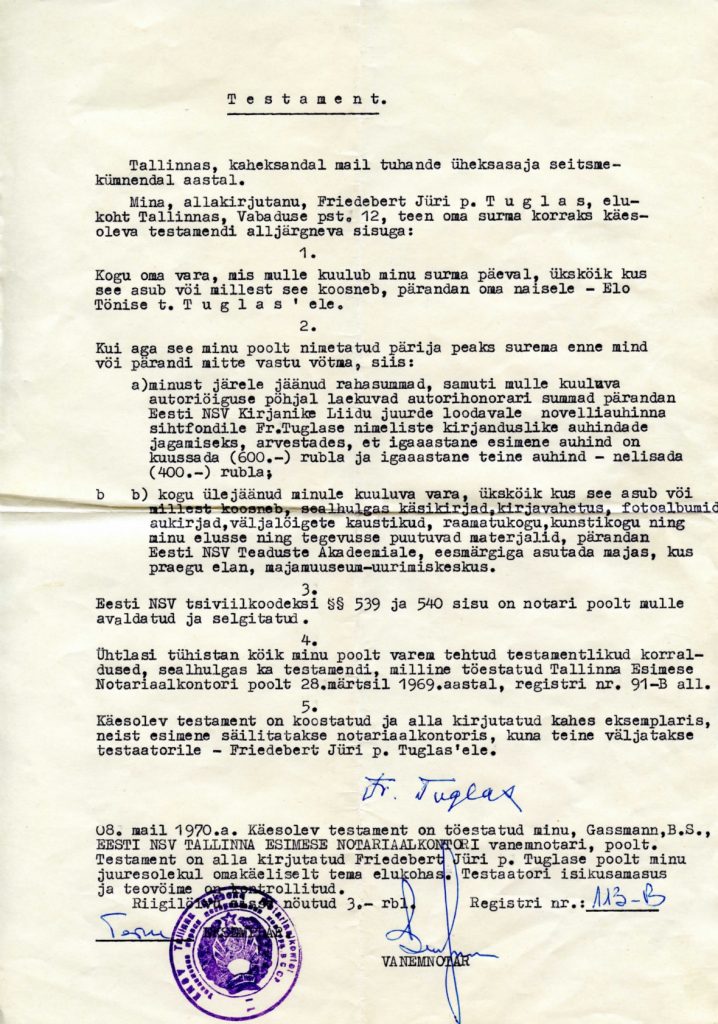
1971
On 2 March 1971, Tuglas` birthday, the recipients of the first short story award named for him were announced.
Tuglas himself had established this annual short story award, making his decision known to the Estonian SSR Council of Ministers and the executive committee of the Writersʼ Union in 1969: „Since short fiction has been dominant in my literary work, the future of this genre is especially close to my heart.“ Things were actually not that simple. Tuglasʼ letter remained unanswered, and it was only after he wrote another one, and the visits of high-ranking officials of the council to his home (by then Tuglas was so tired of the continuing circus that he almost decided to refuse), he was allowed to transfer money to the award fund. On 2 March 1971, when the first awardwinners were announced, they were not given a medal or printed memento. Tuglas died in the next month; renovations began in his home, and it was not until 1976, when the house museum was opened to visitors that all the previous awardwinners were invited to receive the tokens of the prize.
To date the Tuglas Award for Short Story is the Estonian literary prize with the longest unbroken history.
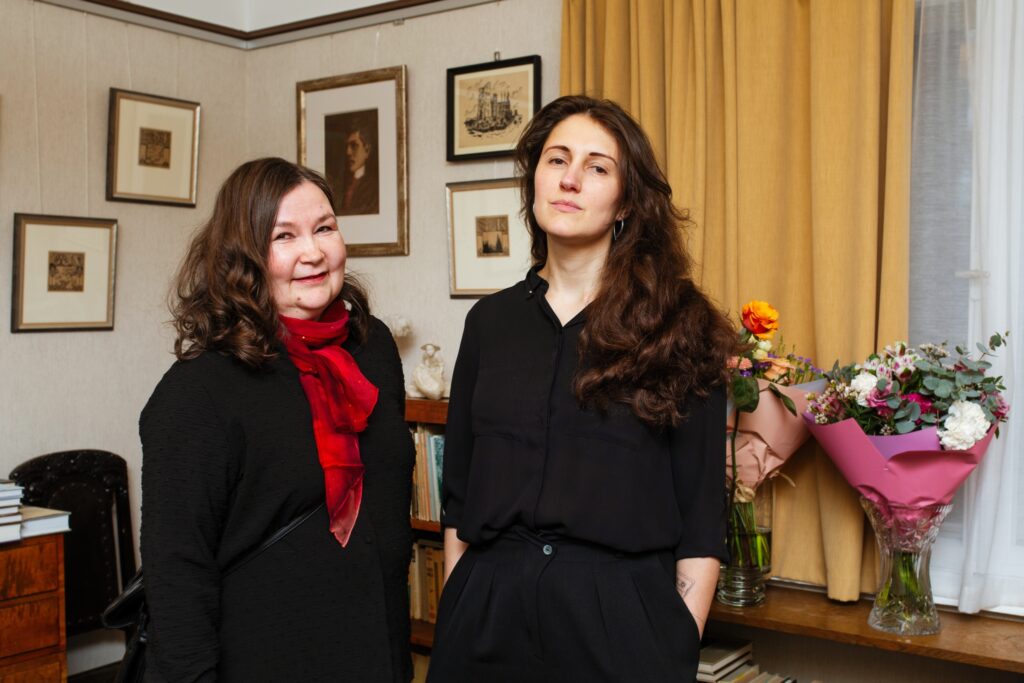
1971
On 27 May 1971 the Estonian Communist Party Central Committee and the Council of Ministers of the Estonian SSR issued a decree tasking the Academy with opening „a house museum in the Nõmme district of Tallinn, in the house where Friedebert Tuglas spent his final years, which shall be a branch of the Literary Museum of the Estonian SSR Academy of Sciences“. By decision of the Academyʼs Presidium on 28 September, such a museum was founded. Literary scholar August Eelmäe was appointed director, and Valter Kruut appointed treasurer.
The preliminary collection of the house museum (which was added to later) consisted of the property Tuglas bequeathed to the Academy. Books were most numerous in the Tuglasʼ home; they fill almost all the shelves and cabinets of the museum (in Tuglasʼ study, the books have been kept exactly the way they were in Tuglasʼ time). The Tuglas art collection includes many of the most renowned works of Estonian art history, e.g by Nikolai Triik, Aleksander Tassa, Andrus Johani, Oskar Kallis, Ants Laikmaa, Konrad Mägi, and Ado Vabbe. There is also a collection of objects, photos, postcards, clippings, and a audio archive.
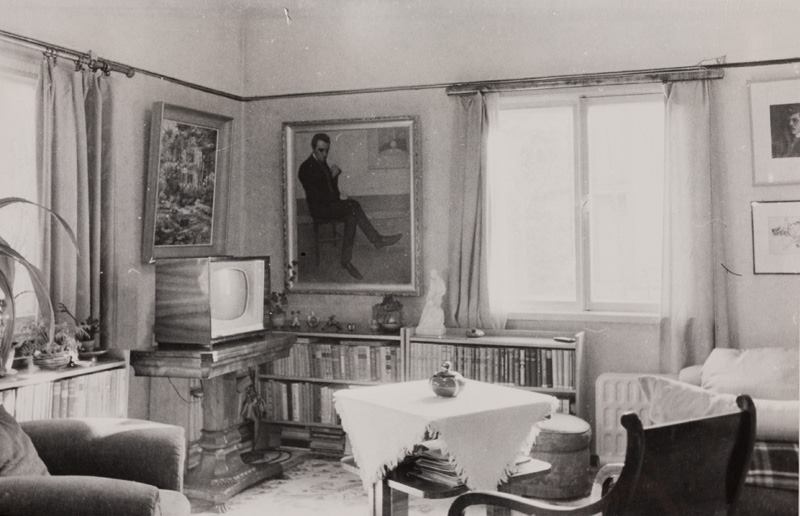
1976
On 2 March 1976, the writer`s 90th birthday, the Tuglas House Museum was opened to visitors.
After Tuglas` death the building was expanded; a small conference room was added on the second floor, and a working space for researchers on the first. The expansion took place according to Tuglas` own design, for he had intended his home to become a home museum-research center. His wish was fulfilled, and the house museum has now developed the Literature Centre`s museum department, which manages the cultural treasures of Tuglas, Artur Adson and Marie Under, the art collection of the Estonian Cultural Fund of the USA and the library and art collection of Paul Reets.
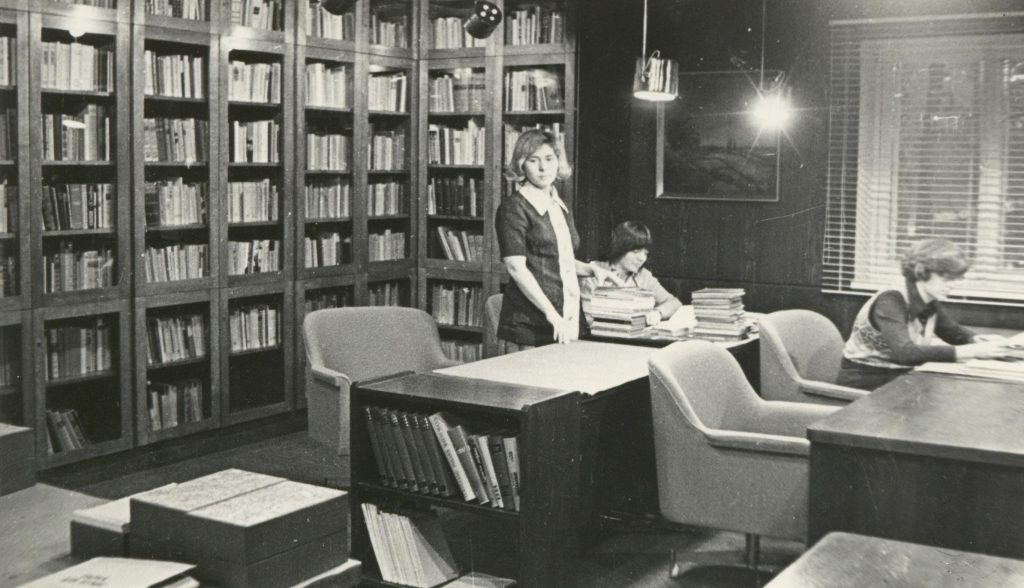
1993
On 19 January 1993 the Academy of Sciences renamed the Tuglas House Museum as the Under and Tuglas Literature Centre. On 4 October, two institutions were fused, the literature department of the Language and Literature Institute of the Academy of Sciences (established on the basis of the Instituteʼs literature sectors in 1988) and the Tuglas House Museum, forming a new research institution, the Estonian Academy of Sciencesʼ Under and Tuglas Literature Centre.
According to the its first constitution, passed on 27 October by the Literature Centreʼs executive board and confirmed on 13 December by the Academyʼs general assembly, the task of the Literature Centre was „to gather, research and publish material on Estonian literature“.
Piret Kruuspere was appointed vice-director, and Piret Viires the first scientific secretary.
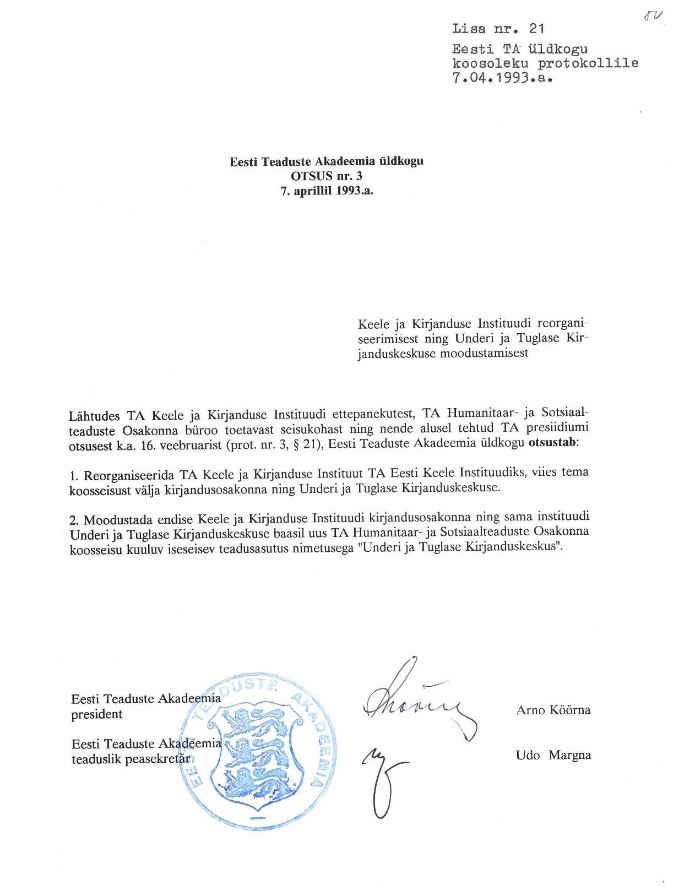
1993
In 1993–1996 the Literature Centreʼs collections were supplemented by the library, art collection, and personal items acquired by Marie Under and Artur Adson in Sweden.
The building where, according to Tuglasʼ wishes, a house museum and research centre were founded after his death, today the the Literature Centreʼs museum department, previously belonged to the literary couple Under and Adson. Adson writes: „In view of the rental prices at the time, I realised that for nine yearsʼ rent one could build a nice little house in Nõmme. […]. Voldemar Puhk gave us an additional loan on his word of honour; some debt was temporarily incurred to a German lumber company, and the basic capital was drawn from some of my wifeʼs literary awards. On 3 October 1933 we moved into our newly-built four-room house – only to leave there on 20 September 1944, during the great escape to Sweden.“
The family fled to Sweden on 20–22 September 1944 on the ship Triina. After their flight into exile, not much of their property remained in the house. It was confiscated by the new government, except for a few pieces of furniture and works of art, that Tuglas found from a space under the ceiling.
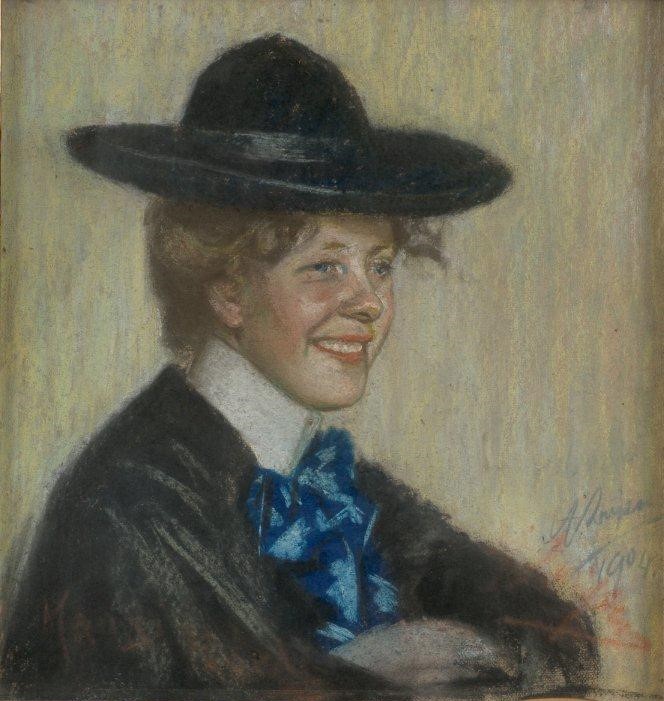
1996
On 25 March 1996 Toomas Liiv was elected as director of the Literature Centre.
Upon his election Toomas Liiv promised to pursue a postmodernist research approach, which would encourage the expression of a plurality of viewpoints. This would also provide a heretofore one-dimensional Estonian literary history with a variety and broad range of interpretive possibilities. (A New Director for the Tuglas and Under Literature Centre. – Päevaleht 13 April 1996).
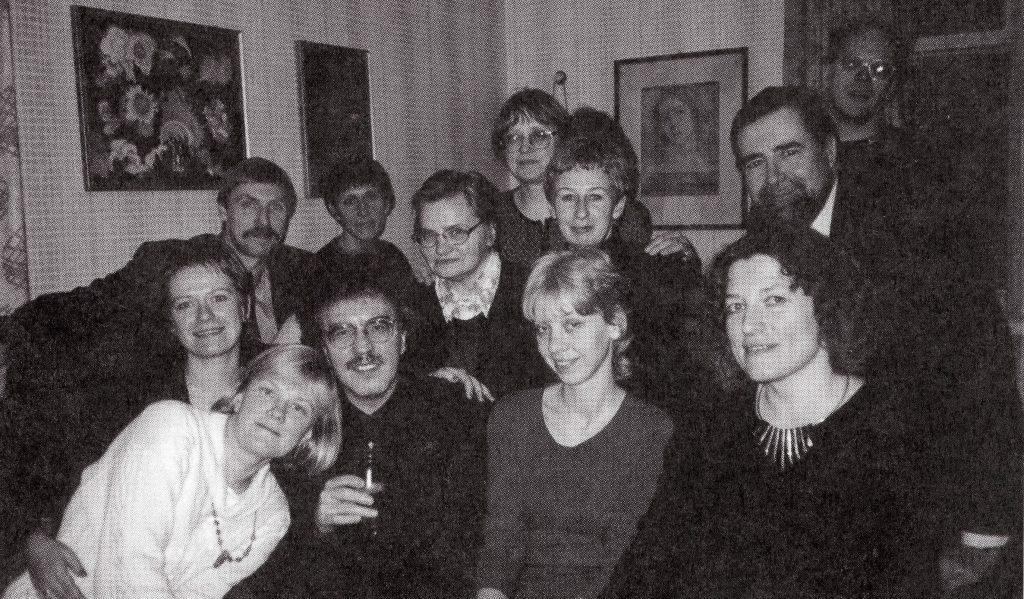
2000
On 7 February 2000 Jaan Undusk was elected as director of the Literature Centre, and he continues to direct the Centre today. In his inaugural speech Jaan Undusk described the Literature Center as an elite institute for the national cutural studies, which like many of its foreign role models would provide the opportunity for specialised researchers to focus on writing alone (Jaan Undusk was elected to the directorship of a research institution. – Päevaleht 8 February 2000).
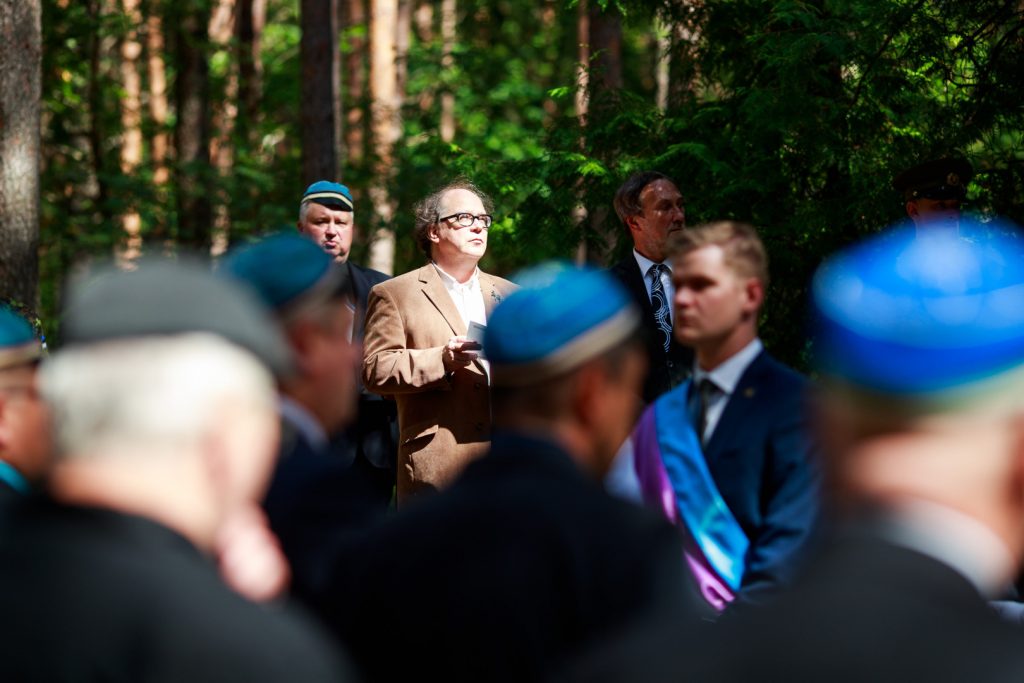
2003
In 2003 the Literature Center began an institutional grant with the research topic ʻThe Estonian Identity Narrative: Ideological and rhetorical models of culture (2003-2007)ʼ.
One of the Literature Centreʼs research priorities came to be the investigation of Estonian culture as a historically multicultural phenomenon. In addition to the nation-centred perspective on existing identity determinants, new emphasis was placed on geographical factors in the historical development of todayʼs Estonian identity. The national aspect is unavoidable when considering Estonian cultural identity, but a new goal was set, namely to shwo how the roots of todayʼs Estonian cultural-political identity can be traced to several ethnically and/or linguistically different „others“, „foreigners“, or even „hostile communities”. Examples are Baltic-German culture or global Estonian diaspora culture after World War II.
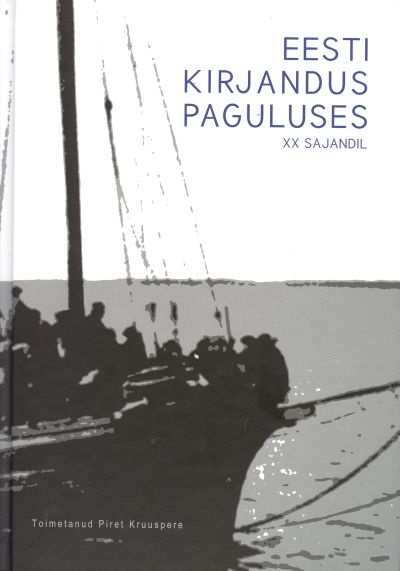
2007
On 17 March 2007, a certificate of donation was signed at the New York Estonian House, whereby the Estonian Cultural Fund of the USA donated its art collection to the Literature Centre. This is a rare collection of exile art, perhaps the only one of its kind, as it was compiled selectively and in a deliberate manner.
In 1968 a decision was made to create a collection of the most significant diaspora works of art. The process of collection was to be financed with annual purchases and donations. Diaspora artists were asked to submit their works to the Cultural Fundʼs art collection. A committee was formed to select appropriate works and to assess their artistic value. By 1975, 33 works of art had been collected, after which the process of collection ceased. It is likely that five of the works were destroyed over time.
In 2007 the main goal of Eduard Rüga, one of the founders of the art collection, was fulfilled: he had wished to preserve the most characteristic and significant works of diaspora art until Estonia was free again and the opportunity arose to relocate them to a museum in the homeland.
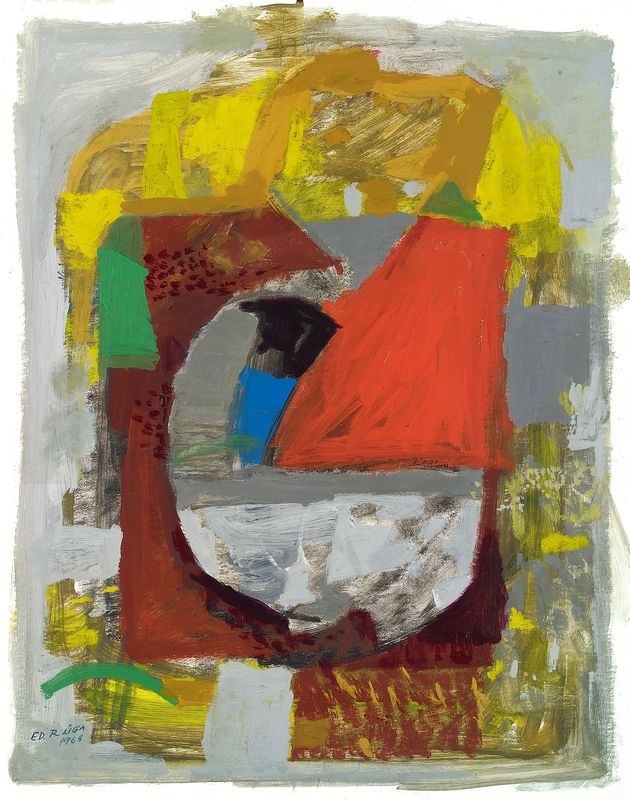
2008
In 2008 the Literature Centre embarked on a new targeted financing research project, ʻAutogenesis and Transfer: The Development of Modern Culture in Estonia (2008–2013)ʼ, with the goal of investigating the mechanisms by which Estonian written culture constructed its identity in the force-field of autogenesis and cultural transfer.
The primary hypothesis was that Estonian national identity has hybrid roots, located in communities that are ethnically, linguistically, and geographically „other“: Baltic-German culture and Baltic cultural space, international modernism of the beginning of the 20th century, post-World War II cuture of the global Estonian diaspora, and in Soviet imperial cultural transfer. We examined the transition from colonial culture to national culture and the functioning of cultural memory in this process, as well as the emergence of some core concepts of modern culture.
A cross-section of the problematics and results of the research project can be found in the collection Autogenees ja ülekanne (Autogenesis and Transfer), compiled by the project participants.
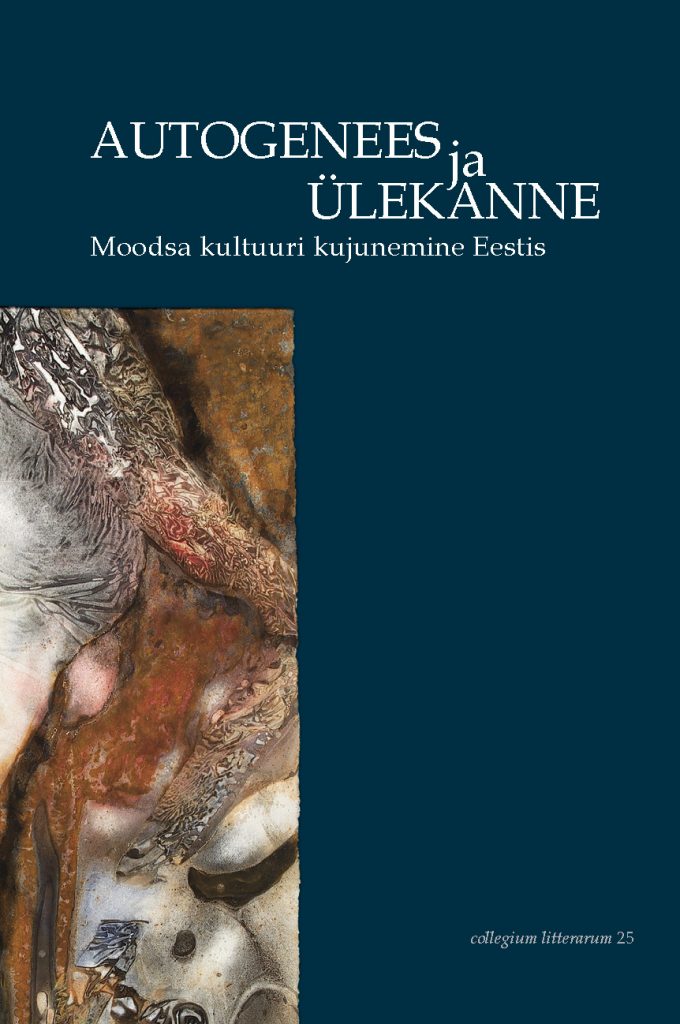
2011
On 22 February 2011 Paul Reets, art and literature critic, member of the Estonian Writersʼ Union and honorary member of the Pallas art association, signed a letter in his home in Boston, whereby he donated his cultural historical treasures to the Literature Centre.
According to the letter of donation, the cultural treasures consisted of „an art collection, a library and Japanese porcelain“, but there were also diaries, a photo collection and other documents, such as Reetsʼ correspondence with Marie Under and Artur Adson. In the years that followed, approximately 800 works of Estonian and western European art (including paintings and graphic art by Eduard Rüga, Epp Ojamaa-Kuhn, and Arno Vihalemm; water colour paintings by Ruth Tulving and Silvia Leitu; graphic art and drawings by Endel Kõks, Ilse Leetaru, Johann Naha, Herman Talvik, and Agathe Veeber) and over 800 books with bibliophilic or artistic value became part of the Literature Centreʼs museum department.
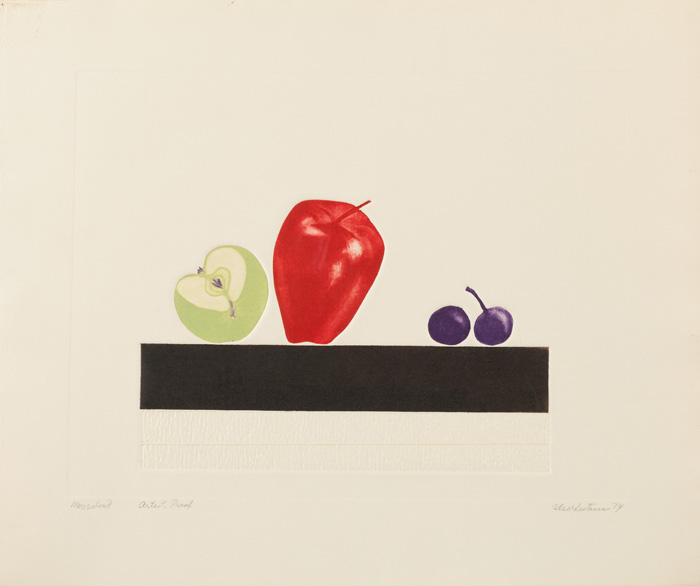
2014
In 2014 the Literature Centre began a new research topic, ʻEntangled Literary History: The Discursive History of Estonian Literary Culture (2014–2019)ʼ.
The emergence and development of literary culture in Estonia is investigated as an entangled process [histoire croisée] reflecting intertwined relationships between manifold ethnic, class-based, cultural, colonial etc motivating factors, in which an important role is played by various criss-cross forms, oppositions, and inertias. The research method is discourse-based, and it is used to analyse areas significant to the historically multilingual Baltic society, such as history, religion, environment, intimacy, etc. In collaboration with an international group of authors the history of literary culture in Estonia (and Latvia) from the 13th to the 19th century will be comprehensively rewritten, encompassing its rich German-language component. Modernity is examined as a way of life shaped by conflictual national aspirations and emphasising emancipation, resulting in the emergence of decadence, and symbolic figures such as the upstart and the artist; related figures of thought (autonomy, time, infinity) are also included in the analysis. Post-Soviet literature, theatre, and film are studied as aspects of the memory culture of recent history.
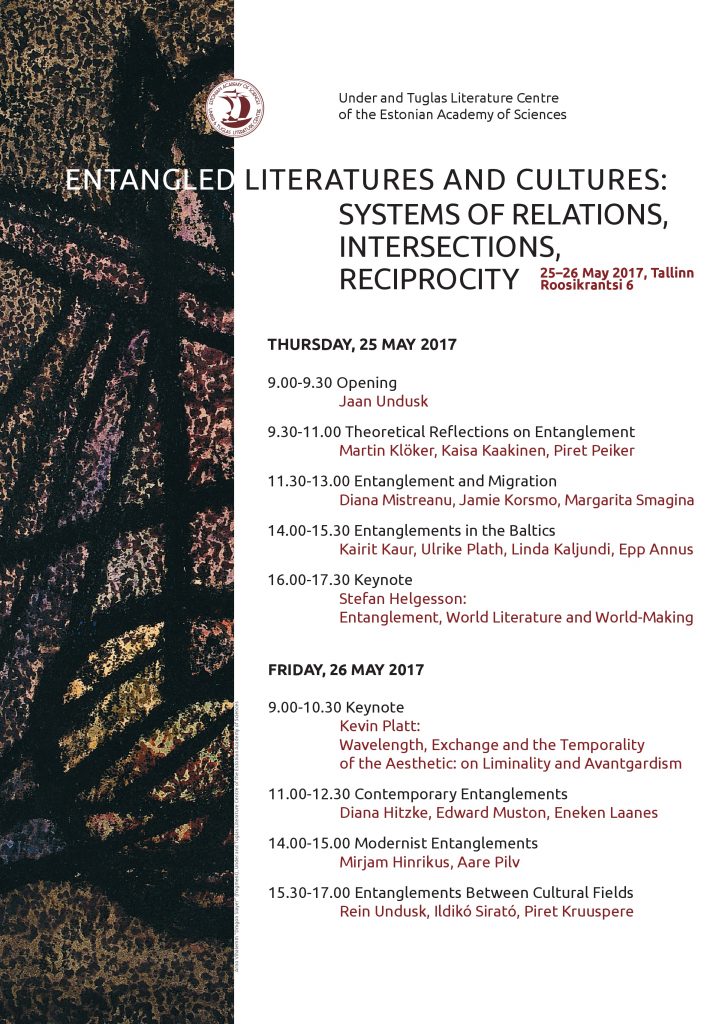
2021
From July 2021, you can find the Literature Centre at Kohtu Street 6, on the side of Toompea hill.
Since its establishment in 1993, the Literature Centre was located at Roosikrantsi 6, in the heart of Tallinn. This is where its predecessor, the Language and Literature Institute of the Estonian Academy of Sciences, moved in 1981. Our new location is in the Estonian Academy of Sciences’ building that now houses both institutions of the Academy of Sciences – the Estonian Academy Publishers that was located here previously and now the Literature Centre as well. In addition to the special co-operation of the three institutions, the house itself is also important. It has close ties to both Baltic German culture and sciences.
The Literature Centre’s museum is still located in Nõmme at Väikese Illimari 12.
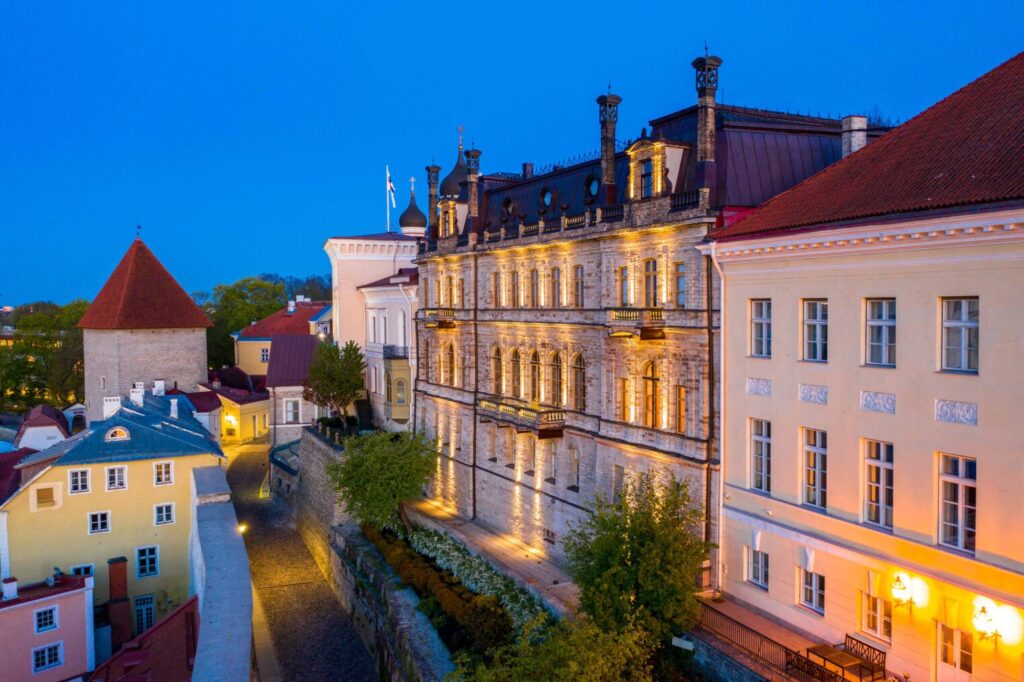
2022
In 2022 the Literature Centre embarked on a new research project, ʻEmergence of a Civilised Nation: Decadence and Transitionality in 1905‒1940ʼ (PRG1667, 2022–2026). The international team of scholars scrutinises decadent literature, art, philosophy, and music at the beginning of the 20th century in Europe’s peripheral small cultures such as the Baltics and the Nordic countries in comparison to Western European decadent culture.
The primary goal is to show how decadence encompasses several discursive practices within naturalism (biological and social determinism, heredity, and degeneration) and relates to representations of nation and race. Decadence has usually been described as cosmopolitan and global, while nationalism has paradoxically been regarded as local (or vernacular). In fact these relations are much more complex. The project seeks to prove that decadence emerged in Baltic and Nordic cultural forms of nationalism in opposition to national conservatism.
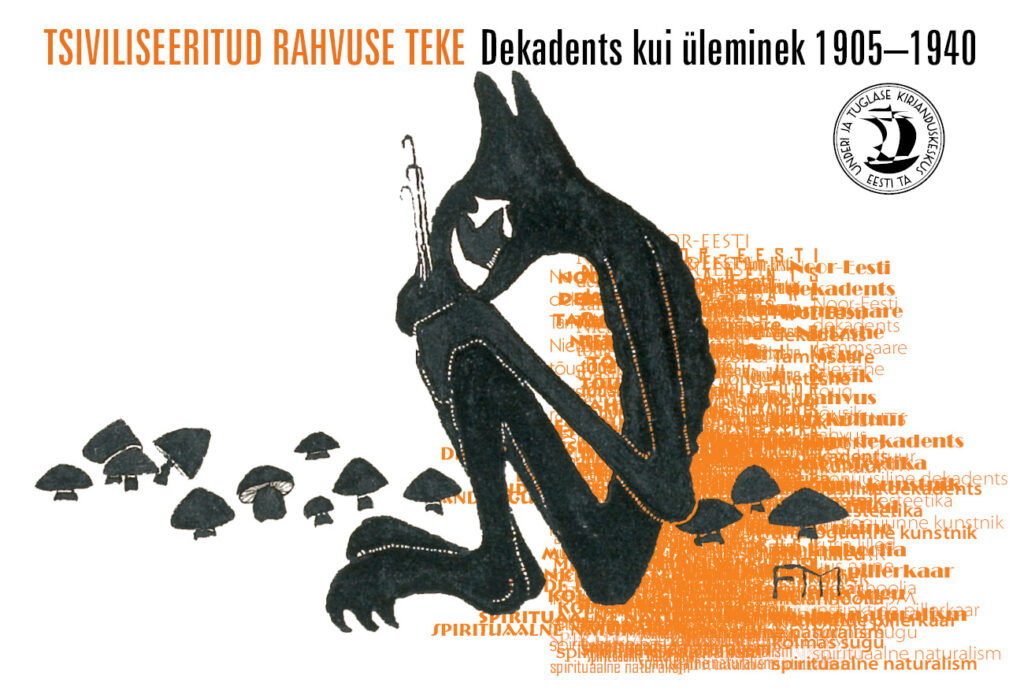
2023
In 2023 the Literature Centre launched a research project ʻConnections, transition, change: nobilitas haereditaria ac litteraria in the emergence of early modern literature in Polish and Swedish Livoniaʼ (PRG1926, 2023–2027). The main aim of this project is to make the broader research community aware of the current research gap in the study of the literature of the Estonian and Livonian nobility in its first centuries (16th–17th centuries) and to fill it with unbiased, scientific, and interdisciplinary well-founded case studies, critical and commented editions of key texts and a handbook based on a solid bibliography. The project seeks a critical revision of the current approach to the Baltic German literature.
The project is based on the hypothesis that the emergence of the writing nobility in Estonia and Livonia was not only caused by a rapid improvement in the economic, political and legal situation of the nobility at the end of the 18th century, but by a sociocultural, educational and literary change that had already occurred in the Early Modern times.
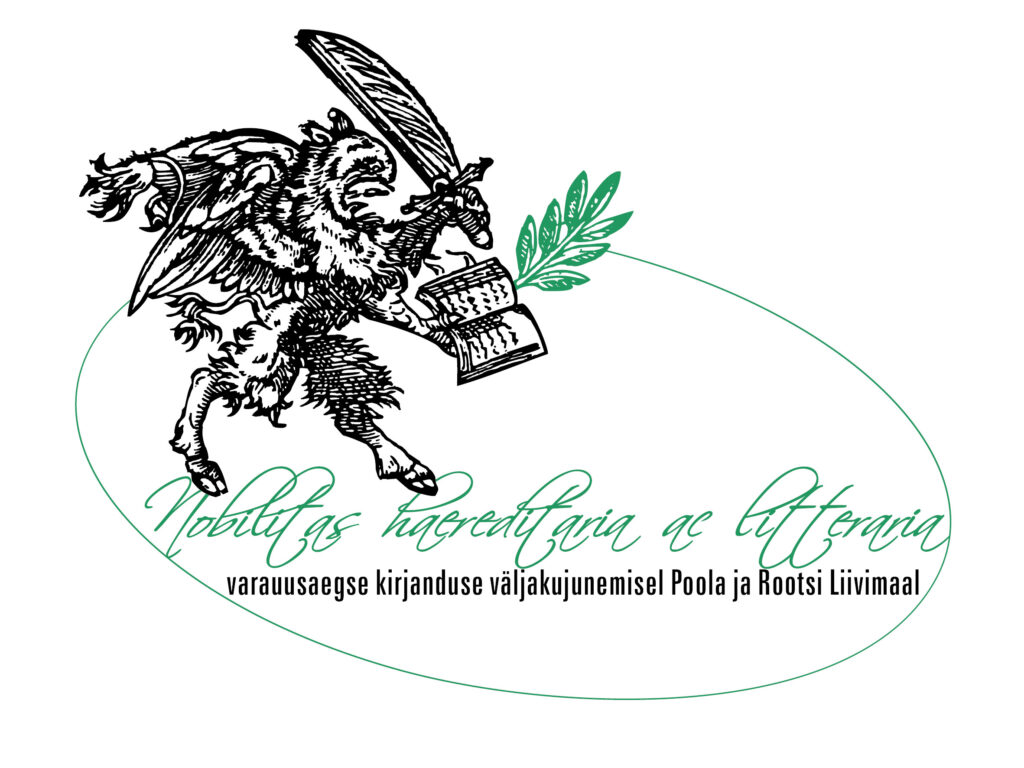
2023
By the end of 2023, almost 9000 photos and photo postcards from the Literature Centreʼs collection had been digitised, as well as over 11 000 pages of manuscripts and clippipngs and over 1000 pages of correspondence. In addition, small-format printed matter, documents, and other archival items have been digitised; over 900 digital images of art works and over 500 digital images of objects have been made of material from the collection.
In 2009 the Literature Centre became a member of the joint information system of museums, Museums Public Portal MuIS, and by the end of 2023, information on 33 181 museum items from the Literature Centreʼs collection had been entered in the database. Digitising archival matter, data entry and generating descriptions for MuIS are ongoing processes
To become acquainted with the Literature Centreʼs collection, click here.
